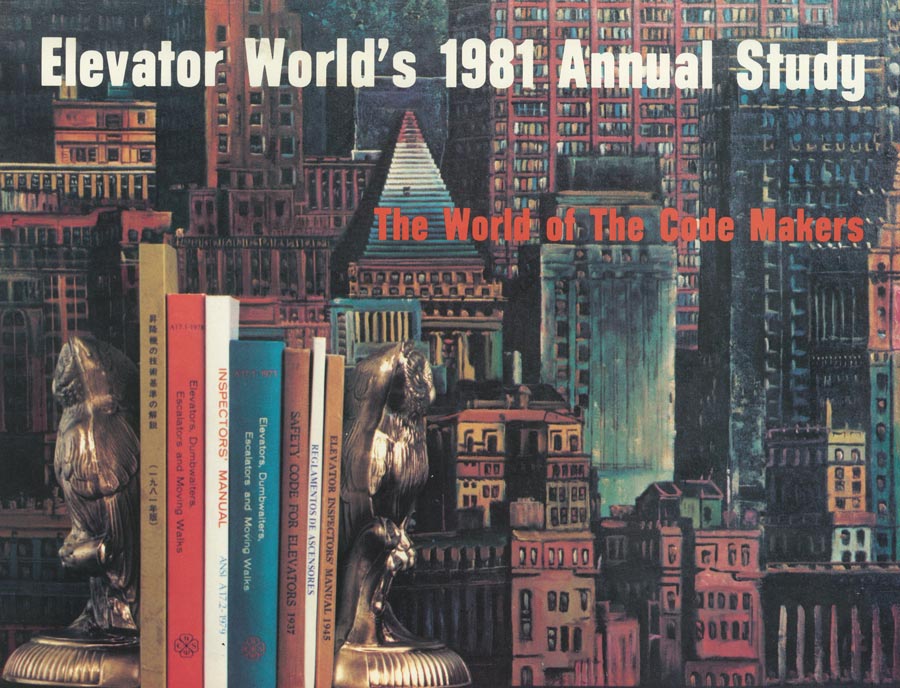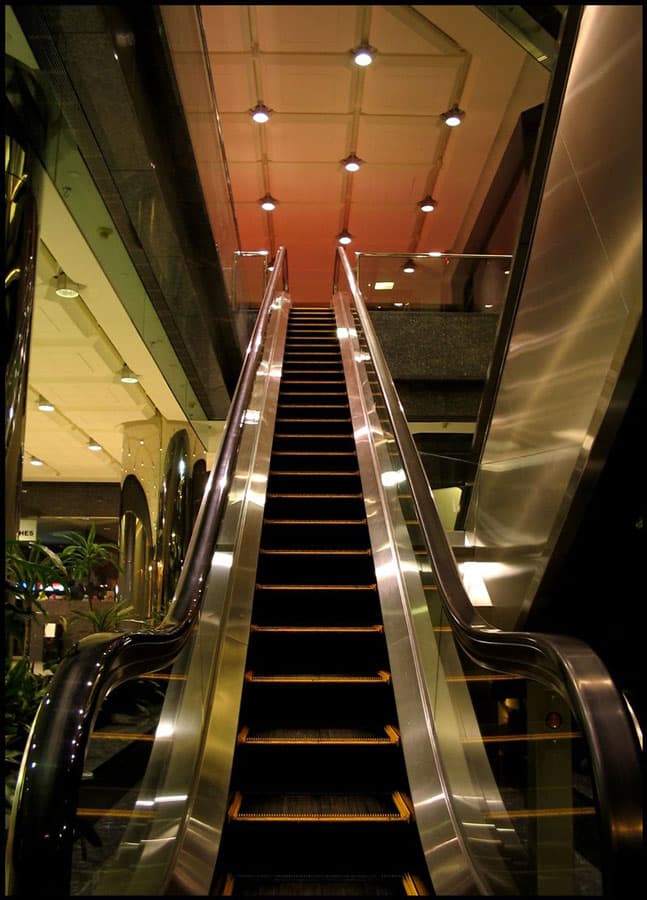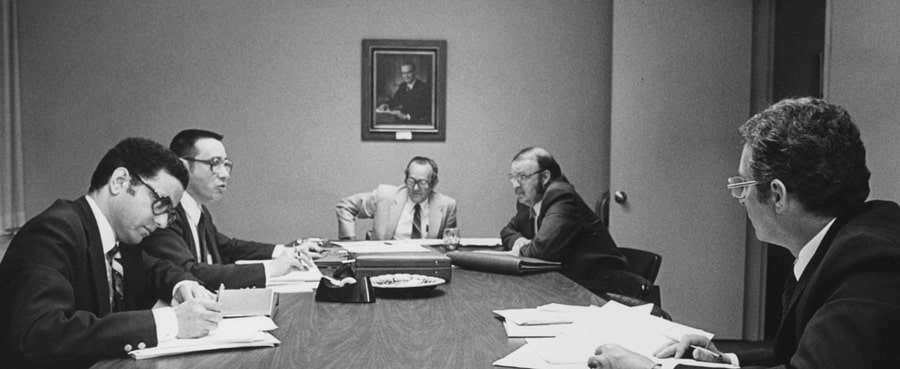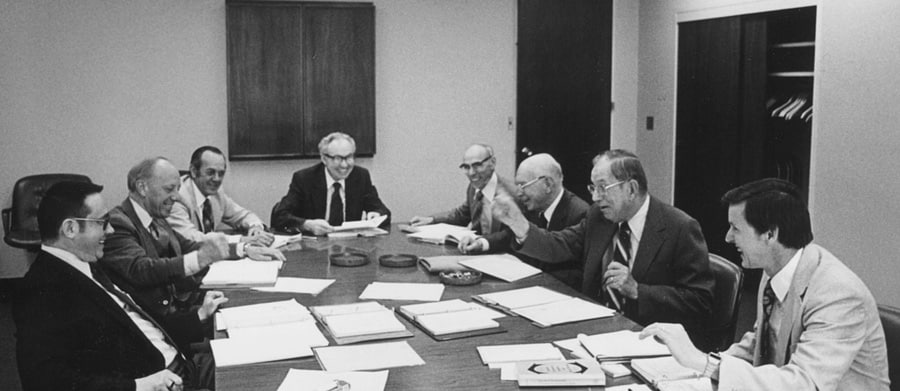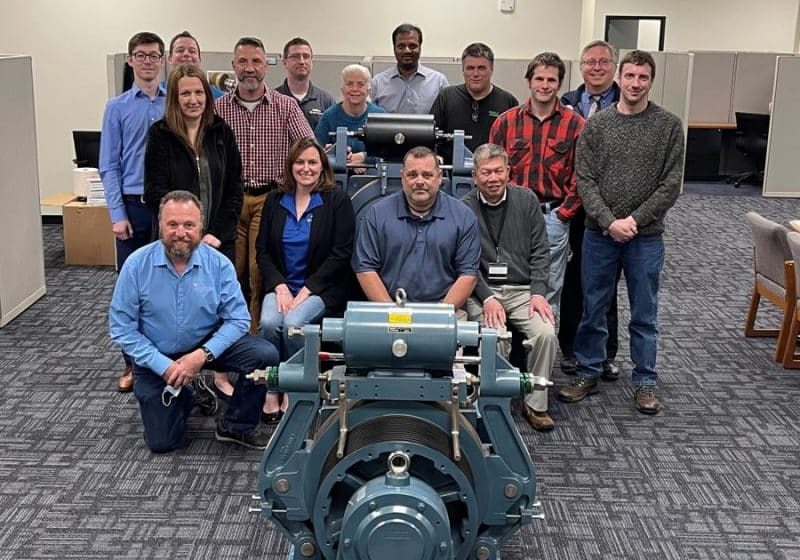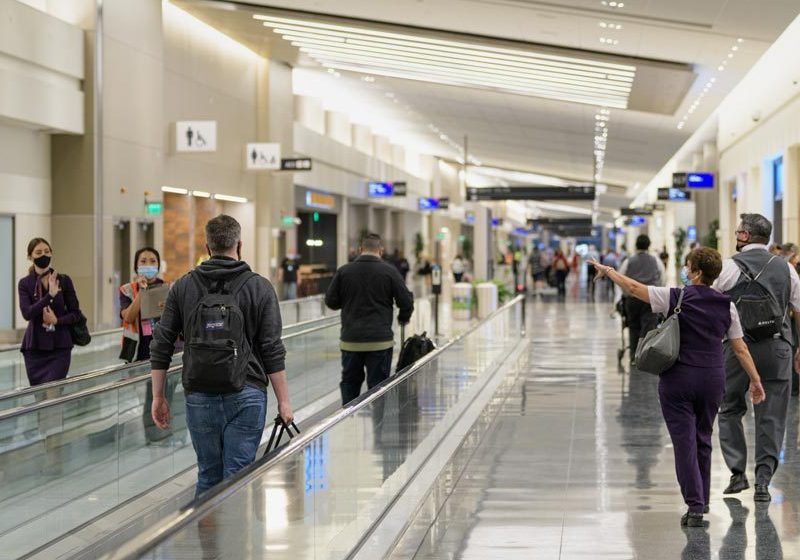A complex story meaningfully told
Centennial celebrations offer unique opportunities to pause, look backward (and forward) and reflect on the meaning and importance of past events. The new Elevator World, Inc., publication, The A17.1 Code: A Century of Progress for Safety 1921-2021, produced by a committee led by George W. Gibson (who also served as the primary author), provides a comprehensive historical outline of the code’s 100-year history. The publication explores the code’s content, how it has changed over time, the reasons behind changes and the individuals and organizations that played significant roles in its creation and development. This multifaceted approach allows this story to be told in a meaningful way. This approach also resulted in the creation of a lengthy bibliography and numerous tables filled with information about people, committees, equipment, code editions, etc. Lastly, this approach serves as a reminder that history is complicated. It often requires the incorporation and exploration of multiple perspectives and voices in order to fully understand a given story.
An additional important aspect of the A17.1 story is that the work occurred behind open — not closed — doors. Equally important is the means by which the vertical-transportation (VT) industry learned about these activities. Since its founding in 1953, ELEVATOR WORLD has served as a primary venue for and source of news about the work of A17.1 leadership and committees. In fact, the creation of EW coincided with the work associated with drafting a new edition of the A17.1 Code. The first edition appeared in 1921 and was followed in rapid succession by revised editions published in 1925, 1931 and 1937.[1, 2, 3, 4, 5] Work on the fifth edition was interrupted by the U.S.’s entry into World War II (a revised version of the fourth edition was published in 1942, which included changes developed for inclusion in the proposed fifth edition).
This early pattern of assessment and revision firmly established the code as a living document whose authors recognized that, for it to remain viable, it must change in response to innovations in VT technology and in response to its implementation. The latter fact gradually resulted in the development of a system that allowed users to ask questions and seek interpretations from code committees. This process of regular interrogation by industry members (and others) required writers to continually assess the code’s language and contents. The pre-war era also included international recognition of A17.1 as a model for code development outside the U.S. It served as a primary source for the first British code (published in 1935) and was an important source used in the initial attempt to develop an international VT code (the draft was published in 1939).[6, 7]
Although work on the Fifth Edition of A17.1 resumed shortly after the conclusion of World War II, the work was not completed until 1955. The extended time required to draft the new edition was due to the rapid pace of change in the VT industry during this period, which included the introduction of the modern operator-less elevator. The parallel stories of the development of the modern elevator and the drafting of the new code appeared side-by-side in EW. The first A17.1 material appeared in the magazine’s third issue (March 1953): “Proposed American Standard Elevator Code Revision — Inclined Power Passenger Lifts: Part V — Section 500.” This article was accompanied by a letter to the editor from George H. Reppert, in which he explained that the fifth edition would be produced via a new code-writing process:
“The American Standard Elevator Code Committee started a revision of the current 1937 code with 1942 changes shortly after the close of the war. After careful consideration, the committee decided that developments in the elevator art since the last edition was drafted made it desirable to completely rewrite the code. In order to get the benefit of the advice of as many persons as possible who manufacture elevators and their accessories, or use them, and the benefit of the advice of architects and engineers who design the buildings in which they are installed, it was decided to set up subcommittees to draft the various code sections, having representatives from all groups interested. This resulted in the appointment of fifteen or more subcommittees, each with ten to fifteen, or more, members. While this method should result in the development of the best possible code, it necessarily has required considerably more time to complete the work.”[8]
Reppert had served on the committees that drafted the 1925, 1931 and 1937 codes, and his involvement in drafting the 1955 edition included membership on the Executive Committee, chairing three subcommittees, serving as secretary on seven subcommittees and serving as a member on two subcommittees. Thus, he played important roles on 12 of the 16 subcommittees established to write the new edition.
Reppert’s recognition that EW was the ideal venue through which to publicize A17.1 news established a pattern of engagement by leading code authors and industry code experts that has continued to the present. Between March 1953 and July 1963, he contributed 11 code-related articles. The topics included introductions to the 1955 and 1960 A17.1 editions, and the 1960 revised Inspector’s Manual.[9, 10, 11, 12, 13] Reppert’s involvement with A17.1 also set the pattern for many industry members’ future code work. He served on code committees from 1925 until 1971 (although retired, he served as an individual member of the Executive Committee responsible for drafting the eighth edition published in 1971). While few committee members have matched his 45 years of service, many have served lengthy terms that demonstrated their profound commitment to A17.1, which illustrated the industry experience and expertise this work requires.
In April 1966, William C. Crager became the voice of A17.1 in EW with an article on the code’s seventh edition.[14] Crager had served on the Sectional Committee that drafted the sixth edition of the code (published in 1960), and in 1964 he was elected committee chair. He served as chair until 1966, after which date the committee was renamed the Standards Committee, which he chaired until 1979. Crager contributed articles to EW from April 1966 to November 1978. These included the first publication in the magazine of an A17.1 annual report, the first appearance of an official A17.1 report on code interpretations and the first history of A17.1. The annual report was for the period from June 1, 1967, to May 31, 1968, and included information on committee organization and members, meetings and actions taken by the Standards Committee.[15] Interestingly, Crager’s article on code interpretations, which appeared in December 1972, was not the first EW article that addressed this topic.
The first article that concerned code interpretations was written by Edward B. Dawson, a code engineer with the National Elevator Industry, Inc. (NEII). In his introduction, Dawson noted that, “Periodically, the NEII office is asked for interpretations regarding the elevator code. Our responses may be of assistance to others, and we set forth several recent interpretations made by the A17.1 executive committee.”[16] He provided six examples of questions the committee had received and their responses. The following is a typical example:
Q. Do Rules 210.2 and 2.11.1 of A17.1-1965 require a switch separate from the emergency stop switch to operate the emergency alarm bell?
A. The Executive Committee has interpreted these rules as requiring two separate switches: one to comply with Rule 210.2 for the emergency stop switch and another for the emergency bell as required by Rule 2.11.1.[16]
While Crager’s 1972 article was second to address code interpretations, it was the first to come directly from an A17.1 committee:
“The American National Standards Committee A17 is always happy to respond to requests for interpretations. . . .As other members of the elevator industry may be interested in the same problem areas, we reproduce the questions and interpretations that have been made by our committee in the past year.”[17]
The use of the word “interpretation” rather than “answer” is interesting in that it appears to speak to the committee’s view of the code as a living document.
The following example, which also concerned Rule 211.1 (A17.1b-1968 & A17.1-1971) Car Emergency Signals for Elevators Without a Designated Operator in the Car, reflected the committee’s process:
Question: Exception (1) in a-1 of this rule reads “Elevators in buildings having a height from the lowest to the highest elevator landing of not more than sixty-five (65) feet providing the distance between any adjacent landings does not exceed fifteen (15) feet.” Does this exception apply to both the item “a” requiring an electric bell operable from the car and item “b” requiring means of two-way conversation on elevators which are operated at any time without a designated operator in the car?
Interpretation: This exception refers only to item “b.” The rule as it is written does not require a two-way conversation means to be provided on elevators which do not have a rise exceeding 65 feet and a distance exceeding 15 feet between any adjacent landings. However, item “a” is still applicable and requires an electric bell to be installed on such elevators.[17]
The use of the word “interpretation” rather than “answer” is interesting in that it appears to speak to the committee’s view of the code as a living document.
Crager’s article on the history of A17.1 was a reprint of a talk he gave on November 15, 1972, at the Conference of the National Association of Elevator Safety Authorities.[18] The talk, which celebrated the code’s 50th anniversary (which had occurred the previous year), addressed its origins and history, and included a detailed account of the effort that produced the 1971 edition. In 1981, EW founder William C. Sturgeon invited Crager, who had retired in 1979, to help assemble material for a forthcoming EW annual issue that focused on A17.1. Sturgeon later recalled that:
“Even after retirement, his work on codes and standards did not diminish and he and the voluminous files in his home were the ‘final court’ when information was sought concerning the history of code development. Bill was a fount of information and data when I edited ‘The World of Code Makers’ in 1981 — always patient and helpful paying tribute to others.”[19]
In addition to editorial assistance, Crager also contributed an article that offered a historical overview of A17.1.[20]
Following Crager’s retirement, David A. Wizda became EW’s primary source of news on A17.1. Wizda joined the staff of the American Society of Mechanical Engineers (ASME) as secretary in 1978. In 1981, he joined the A17.1 Main Committee, where he also served as secretary, a post he held until February 1993. He contributed articles on A17.1 to EW from June 1979 to July 1996. His first article addressed the process by which code revisions were approved.[21] Wizda introduced his topic by noting that while:
“Changes to the A17.1 Elevator Code often originate from studies made by the various A17 subcommittees or by individual committee members. . .the majority of the revisions are initiated by correspondence with the users of the code who suggest that requirements be clarified, expanded or deleted in order to encompass new or nontypical situations or equipment. This is a vital input into the code writing process for the following reasons: (1) the collective experience of the manufacturers and users of the equipment and the enforcers of the code help it to be as comprehensive as possible; and (2) the committee members may be too familiar with the code jargon to realize when a requirement may seem confusing or ambiguous.”[21]
This introduction was followed by a detailed account of the A17.1 revision process in operation at that time.
The Executive Committee first assigned the review of a proposed change to the appropriate subcommittee, which performed “the bulk of the technical research and writing, until the wording of a proposed rule change was approved by both the subcommittee and the Executive Committee.”[21] This was followed by a six-week period of balloting that engaged “the members of every A17 committee or subcommittee.” Paralleling the balloting process was a six-week period of public review and comment. These activities were followed by a 30-day review by the Standards Committee, with a two-thirds majority vote required to approve a proposed change. Wizda noted that:
“from the time a change is proposed, to the time it has completed this revision procedure and is eventually published as part of the A17.1 Code, at least a year has elapsed. It will take even longer if the proposal involves developing a lengthy set of requirements for new equipment or if an appeal is made during any step of the procedure.”[21]
This article thus followed the precedent set by earlier A17.1 articles with its goals of educating the VT community about important procedures and providing transparency in the code-writing process.
The topics of Wizda’s articles included A17.1 Annual Reports, code interpretations and information on revisions and new editions. In April 1982, he announced the publication of the A17.1 Handbook by Edward A. Donoghue. The book included the complete text of the 1981-A17.1 edition, which was “augmented by commentary intended to explain and clarify the requirements of the Code. . . material useful for the implementation and enforcement of the Code, as well as the intent and rationale of many of the requirements.”[22] The Handbook also contained more than 70 drawings, photographs and charts that illustrated code terminology and requirements, the text of applicable portions of the NFPA National Electrical Code and Life Safety Code and a summary of the changes made to the Code from 1979 to 1981.[22] The success of the Handbook was such that, since 1982, 12 revised editions have appeared, each released approximately one year after the publication of a new A17.1 edition. A unique aspect of the Handbook is the inclusion of the rationale behind changes to the code.
Donoghue had contributed his first article to EW in 1978, which was a precursor to his 1982 Handbook, as evidenced by Sturgeon’s introduction:
“As it is a chore for the average member of our industry to determine the changes from one edition of the elevator code to another, Ed Donoghue, the Code Engineer of the National Elevator Industry, Inc., has prepared a synopsis of these in the ninth edition of the Safety Code for Elevators, Dumbwaiters, Escalators and Moving Walks ANSI A17.1-1978.”[23]
In 1986 and 1987, Donoghue contributed a series of articles to EW on A17.1 that supplemented those written by Wizda. In fact, beginning in 1988, Wizda was regularly joined by others reporting on A17.1 and, although he continued to contribute articles, the role of serving as the code’s primary voice gradually transitioned to a new author.
In April 1988, industry veteran George R. Strakosch published his first A17.1 article in EW.[24] He would later join the magazine’s staff, an action that brought code reporting firmly under the editorial umbrella of EW. Strakosch’s 1988 article was different from previous articles in that it was not simply a recitation of meeting outcomes, as was evident in its opening paragraph:
“While the rest of the country was looking forward to the Super Bowl, the ASME A17 Main Committee was looking forward to a bit of sunshine for their January 27 meeting. Arrangements had been made to hold it in the Catamaran Hotel on Mission Bay in San Diego with the understanding that we would vacate on January 28 so that the hotel could be turned over to football fans. In fact, we all had to sign affidavits that we would give up the rooms.” [24, 25]
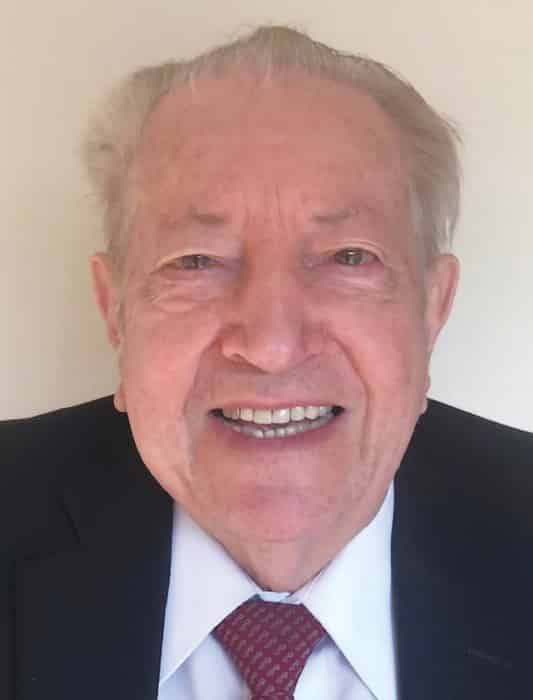
Bialy 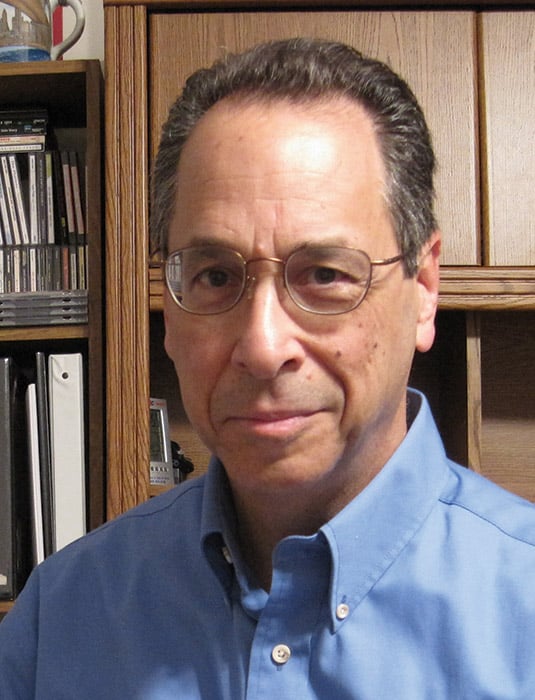
Caporale 
Crager 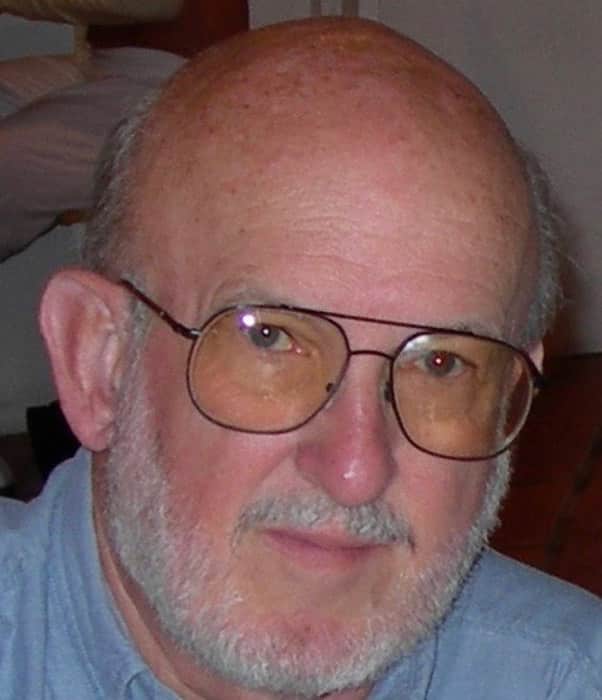
Donoghue 
Gibson 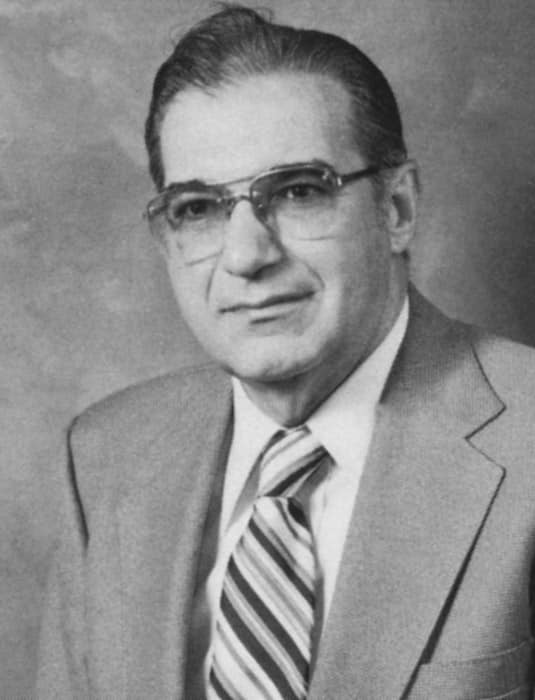
Strakoschs 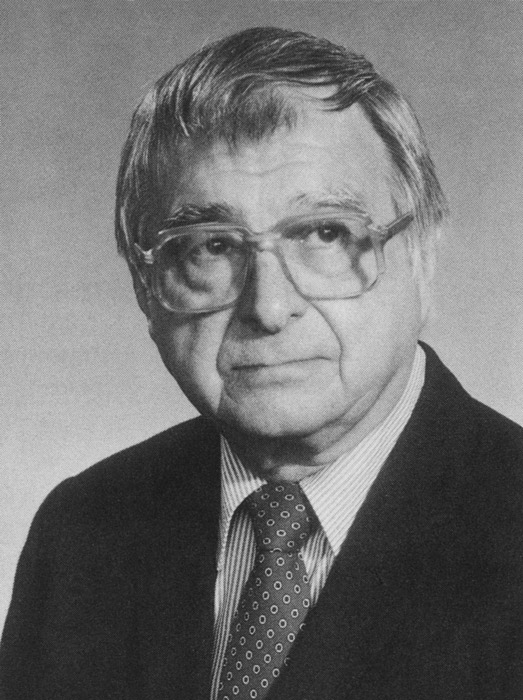
Sturgeon 
Wizda
Strakosch served as the magazine’s lead correspondent for A17.1 from 1989 to mid-1994, when A17.1 reporting began its transition to a new member of the EW staff.
Robert S. “Bob” Caporale’s first A17.1 article appeared in June 1994.[26] Caporale’s reporting style matched Strakosch’s in its clear descriptions of committee activities. He also often included calls for VT industry members to actively engage in code discussions. These characteristics were evident in his earliest articles, as evidenced by his reporting about a discussion on escalator safety standards that occurred at the Winter 1995 A17.1 meeting:
“Should escalators be designed to maintain maximum emergency stopping distances (i.e., minimum rates of deceleration) to prevent riders from being pitched forward — even while, perhaps, causing an increase in the amount of time necessary for the escalator to come to a complete stop? Some feel that the longer time it takes to stop, the equipment will protect riders, while not necessarily further reducing injury to an entrapped passenger. Others feel that should entrapment occur, the escalator must be stopped as soon as possible. Both sides make a compelling argument. Well-developed positions on the issue should be forwarded to the A17 Escalator Committee for consideration. Don’t pass up a chance to make a difference and take part, by long distance, in A17 code development.”[27]
Caporale served as EW’s primary code reporter from 1996 to 1999, and he continued to contribute code articles until his retirement in 2015. A shift in A17.1 reporting that began in the late 1990s and continued into the new century reflected the increased complexity of code development and increased efforts to work with code authorities outside the U.S. This resulted in EW utilizing a blend of in-house correspondents and industry veterans to fully report on A17.1 activities. In addition to Caporale, code article authors during the last 20 years have included Jim Marcusky, James W. Coaker, Lou Bialy, Richard Gregory, George W. Gibson and Lee Freeland.
Since its founding, EW has published hundreds of articles on A17.1 and other code-related topics. The inclusion of code material reflected the vision of EW founder William C. Sturgeon, who recognized that, in order to fully tell the VT industry story, all aspects and voices must be present. The strength of this ongoing commitment is evident in the magazine’s publication of the A17.1 centennial story: The A17.1 Code: A Century of Progress for Safety 1921-2021. While it would be possible to write the history of the last 100 years of VT without mentioning the A17.1 Code, the absence of this story and the absence the people who committed time, energy and intellectual capital to its creation and sustained presence would result in a diminished understanding of the past. History is complicated. Writing a history is, perhaps, even more complicated.

The A17.1 Code: A Century of Progress on Safety 1921-2021 is available in limited print edition at elevatorbooks.com.
References
[1] Lee E. Gray, “The First Elevator Safety Code: A Mystery,” ELEVATOR WORLD, November 2006.
[2] Lee E. Gray, “The Code Writers of 1921,” EW, May 2008.
[3] Lee E. Gray, “The American Safety Code for Elevators and Escalators 1921-1931: Part One,” EW, August 2016.
[4] Lee E. Gray, “The American Safety Code for Elevators and Escalators 1921-1931: Part Two,” EW, September 2016.
[5] Lee E. Gray, “The American Safety Code for Elevators and Escalators 1921-1931: Part Three,” EW, October 2016.
[6] Lee E. Gray, “The 1935 Code of Practice for the Installation of Lifts and Escalators,” Proceedings of the 6th Symposium on Lift & Escalator Technologies (2016).
[7] Lee E. Gray, “The First International Elevator Safety Standards,” Elevator Technology 22: Proceedings of Elevcon 2018 (2018).
[8] George H. Reppert, Letter to the Editor, EW, March 1953.
[9] George H. Reppert, “Innovations in the Fifth Code, Part I,” EW, July 1956.
[10] George H. Reppert, “Innovations in the Fifth Code, Part II,” EW, August 1956.
[11] George H. Reppert, “Innovations in the Fifth Code, Conclusion,” EW, September 1956.
[12] George H. Reppert, “Up-dating and Applying the Elevator Code,” EW, July 1961.
[13] George H. Reppert, “1960 Revised Inspector’s Manual,” EW, October 1960.
[14] William C. Crager, “Seventh Elevator Code Revision,” EW, April 1966.
[15] William C. Crager, “A17.1 Annual Report,” EW, August 1968
[16] Edward B. Dawson “Lighting Up the Shaftway: A17.1 Code Interpretations,” EW, November 1969.
[17] William C. Crager, “Lighting Up the Shaftway: Code Interpretations,” EW, December 1972.
[18] William C. Crager, “Code Chairman Speaks on the A17 Story,” EW, February 1973.
[19] William C. Sturgeon, “Monitor,” EW, July 1987.
[20] William Crager, “Annual Study – The World of Code Makers: An Historical Retrospective,” EW, October 1981.
[21] David A. Wizda, “Codes and Standards,” EW, June 1979.
[22] David A. Wizda, “Codes and Standards: Handbook on A17.1 Safety Code,” EW, April 1982.
[23] Ed Donoghue, “Lighting Up the Shaftway: Changes in the ANSI A17.1-1978 Code,” EW, December 1978.
[24] George R. Strakosch, “Codes and Standards: ASME Main Committee San Diego Meeting,” EW, April 1988.
[25] Super Bowl XXII was played in Jack Murphy Stadium in San Diego on January 31, 1988. The Washington Redskins defeated the Denver Broncos 42-10.
[26] Robert S. Caporale, “Codes and Standards: Dallas Code Meeting,” EW, June 1994.
[27] Robert S. Caporale, “Codes and Standards: Winter 1994 – A17 Code Meetings – Philadelphia,” EW March 1995.
Get more of Elevator World. Sign up for our free e-newsletter.



